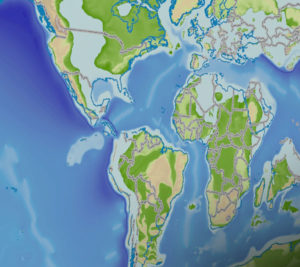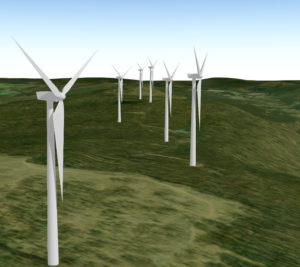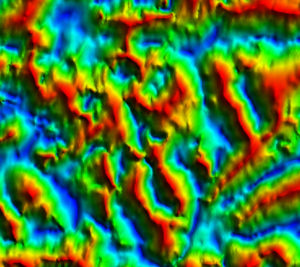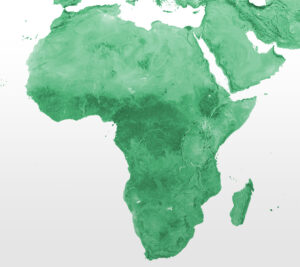Carbon storage – a vital piece of the energy transition jigsaw
Effective carbon capture and storage (CCS) will play an important role in the energy transition, with a storage capacity of 7.6 billion tonnes/year anticipated to be required by 2050 (see Figure 1).
CO2 is commonly injected into sedimentary reservoirs such as saline aquifers or former oil & gas fields, but an additional solution being investigated is injecting CO2 into reactive ultramafic igneous rocks (Kelemen et al., 2020) – low in silica, rich in magnesium and iron – as demonstrated in recent pilot studies in Oman by the 2022 Earthshot prize winner 44.01. The concept of using igneous reservoirs for CCS is not new; the Carbfix project in Iceland has, over 8 years, successfully injected ~ 86,000 tonnes of CO2 into volcanic basalt (Osselin et al., 2022).
In this blog, we explore how we leverage Getech’s unique databases of gravity and magnetics, geological information from our Globe knowledge-base, and advanced analytics to high-grade favourable locations for ultramafic storage projects.
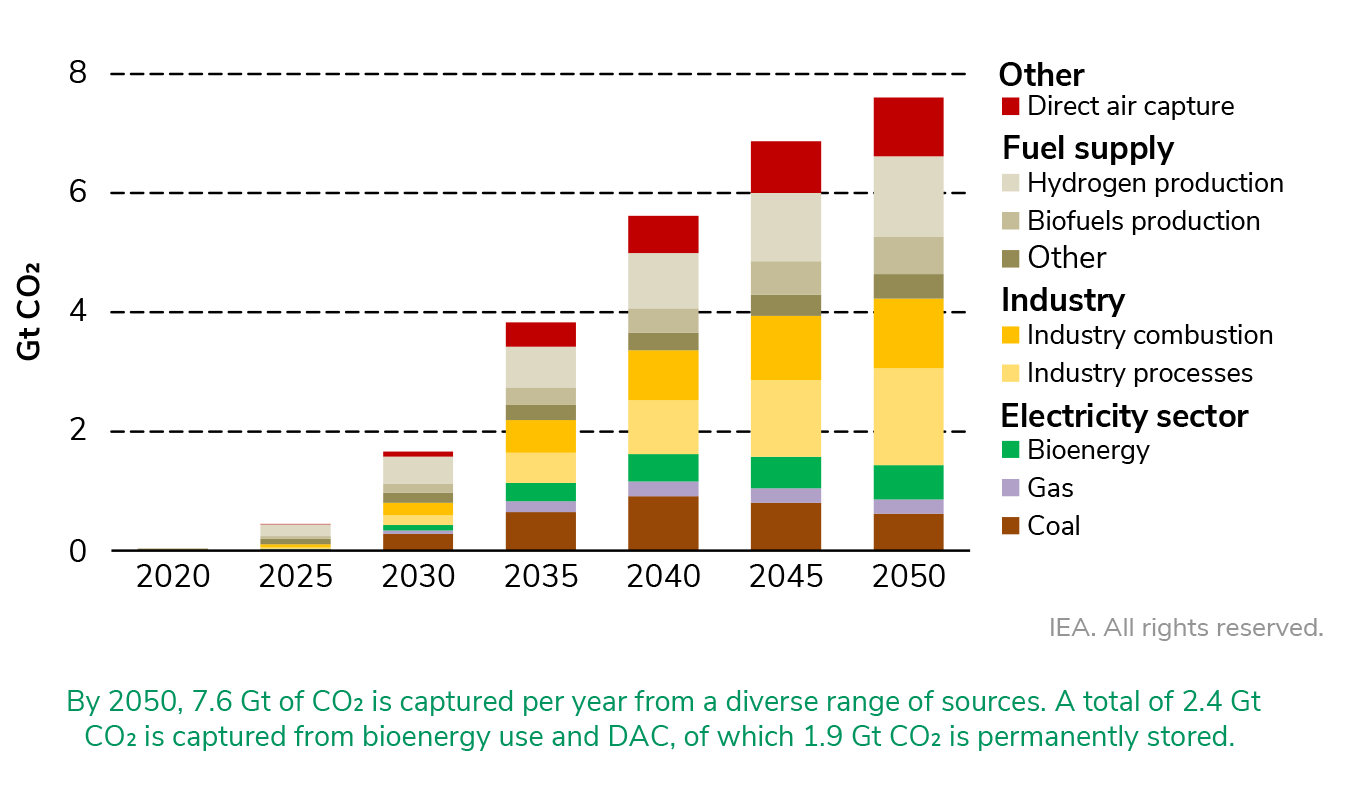
Figure 1: Annual CCS Capacity needed to meet IEA sustainable development Scenario (from IEA Report (Net Zero by 50; Bouckaert et al., 2021).
How it works
The basic process relies on CO2 reacting with magnesium and/or calcium to form carbonate minerals such as calcite (CaCO2), magnesite (MgCO3) or dolomite (CaMg(CO3)2). Rocks such as peridotite and related ultramafic intrusions (with abundant iron-, magnesium- , and calcium-rich minerals like olivine and pyroxene) are key targets. By injecting CO2 dissolved in water into these rocks, the natural chemical reaction can be greatly accelerated. The derived compounds effectively ‘lock-in’ the carbon forever, diminishing the need for ongoing monitoring that may be needed with CO2 stored in sedimentary reservoirs.
Locating potential targets
Ultramafic rocks have several properties which we exploit to predict where they might exist underground. They are generally high density, highly magnetised, and associated with specific tectonic environments such as convergent or palaeo-convergent margins where oceanic crust and upper mantle have been scraped off a subducting plate and preserved as an ophiolite.
At Getech, we have been combining our comprehensive global coverage of regional gravity & magnetic data together with insights from our global plate model, Globe, and our in-house minerals occurrence database, to characterise the signatures of known ophiolites and other ultramafic rocks. Using the geophysical signatures and tectonic context of known ophiolites we validate our analysis so that we can predict the locations of subsurface ophiolites, not represented in maps of surface geology.
Figure 2a shows a positive correlation observed between the well-studied Semail Ophiolite in Oman, and the related high amplitude positive anomalies exhibited within Getech’s global gravity data. Figure 2b shows Getech’s global crustal types layer, classifying this region as part of an inverted passive margin suite – this same classification elsewhere in the globe provides further areas for screening of similar gravity (and/or magnetic) responses.
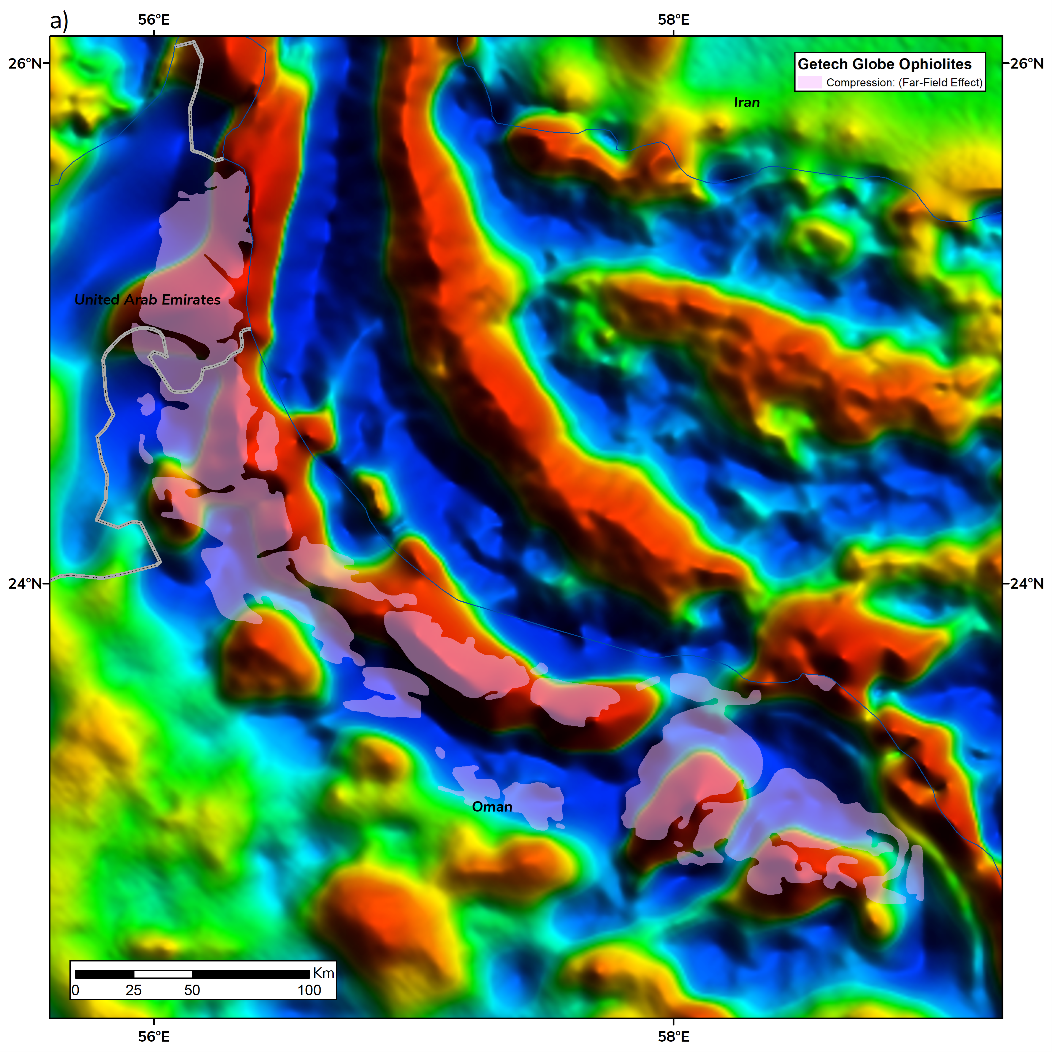
Figure 2a: Semail Ophiolite interpretation from Getech’s Globe layer overlaying Getech’s Global Gravity (100 km high-pass filtered isostatic anomaly) data.
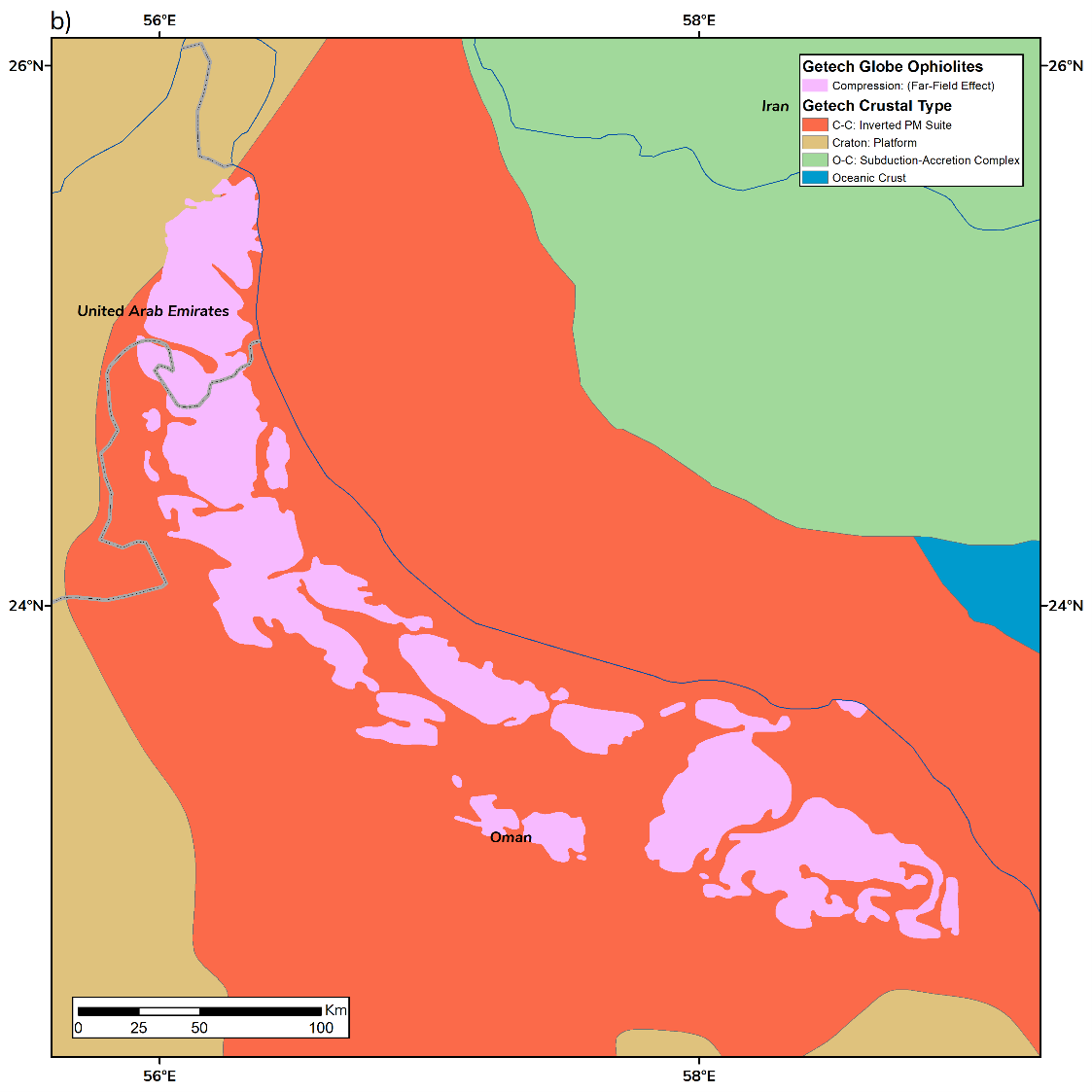
Figure 2b: Semail Ophiolite interpretation from Getech’s Globe layer overlaying Getech’s Crustal Types layer.
Meanwhile, Figure 3 shows a strong correlation between ultramafic rocks mapped at surface in California, USA and positive anomalies from Getech’s global magnetic data. This demonstrates that Getech’s regional magnetic data – when processed appropriately – can help identify the locations and predict the size and depth of previously undiscovered ultramafic bodies.
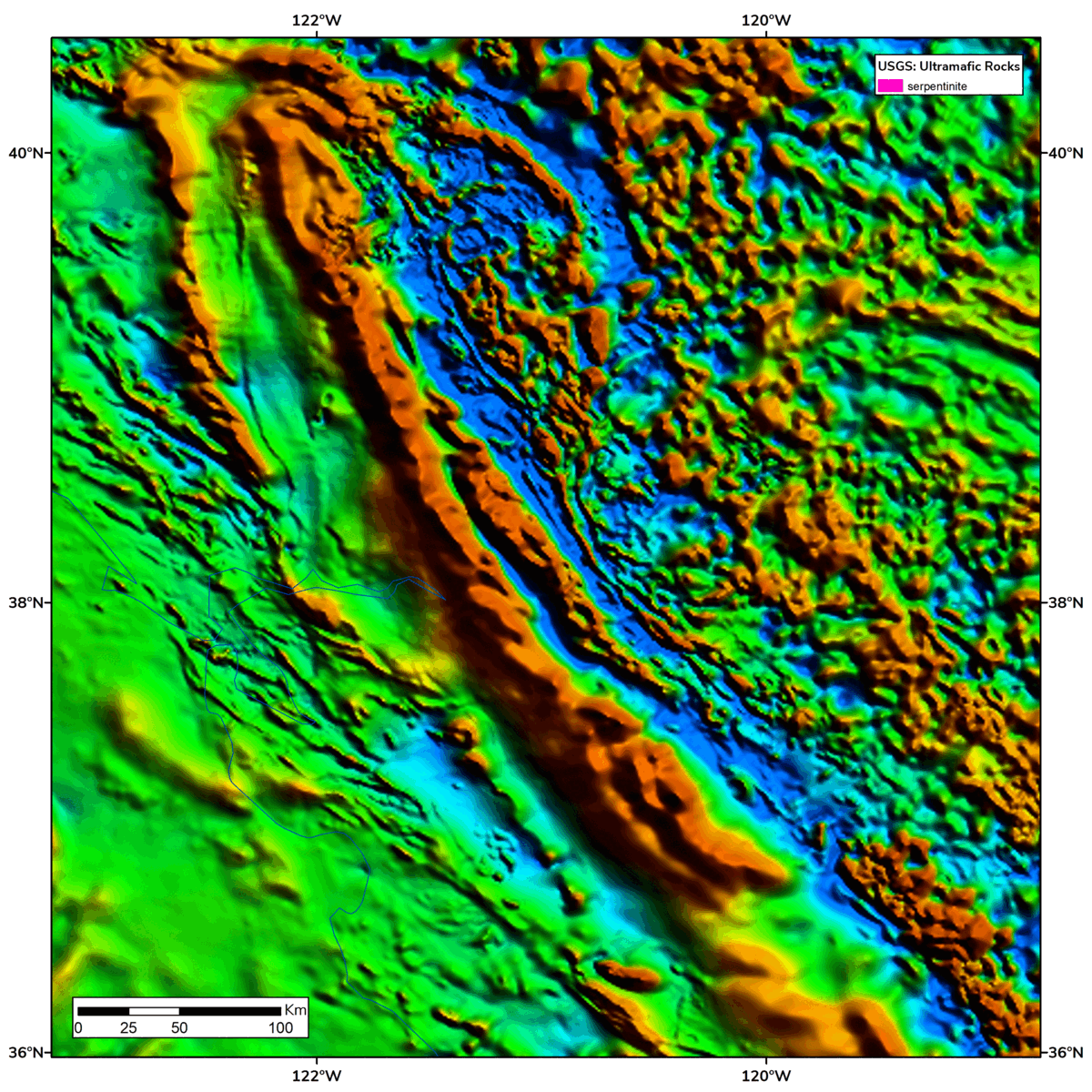
Figure 3: Animation showing ultramafic rocks (USGS, 2018) in pink overlaying Getech’s Global Magnetic (reduced to pole) data.
Essential tools for regional mapping
Our work has highlighted that our data and insights can be vital for evaluating ophiolite suites, allowing interested parties to isolate the ultramafic rocks from the associated ophiolite sedimentary succession.
By considering the gravity & magnetic data together with mapped surface geology, tectonic setting and models of ophiolite suites, the outlines of known ophiolites can be re-defined (including at depth) and potential new (as yet undiscovered) ultramafic bodies identified. Furthermore, we can quantify the depth to these targets to de-risk future exploration.
Combining these geological observations with socio-economic factors (such as CO2 emission taxes) and infrastructure data (e.g. CO2 point source locations and CO2 transport options) allows us to high-grade areas for further analysis.
Identification and quantification of new ultramafic rocks provides the world with additional carbon storage solutions that are critical for the world to stay below a 2 ̊C temperature increase, with CCS an integral and vital requirement to reaching net-zero.
In a follow-up blog, we will explore the role of serpentinised mantle rocks in generating native (‘gold’) hydrogen and how similar mapping and integration of different Getech datasets helps predict the locations of this valuable resource.
For further discussion on this fast-developing topic, please contact the Getech team at info@getech.com
Written by David Tierney, Chris Green and Simon Campbell

